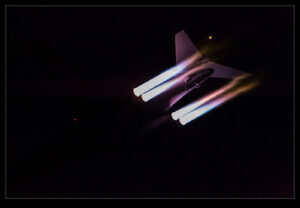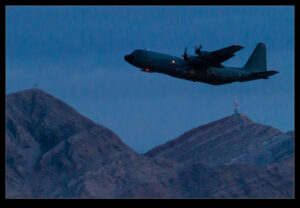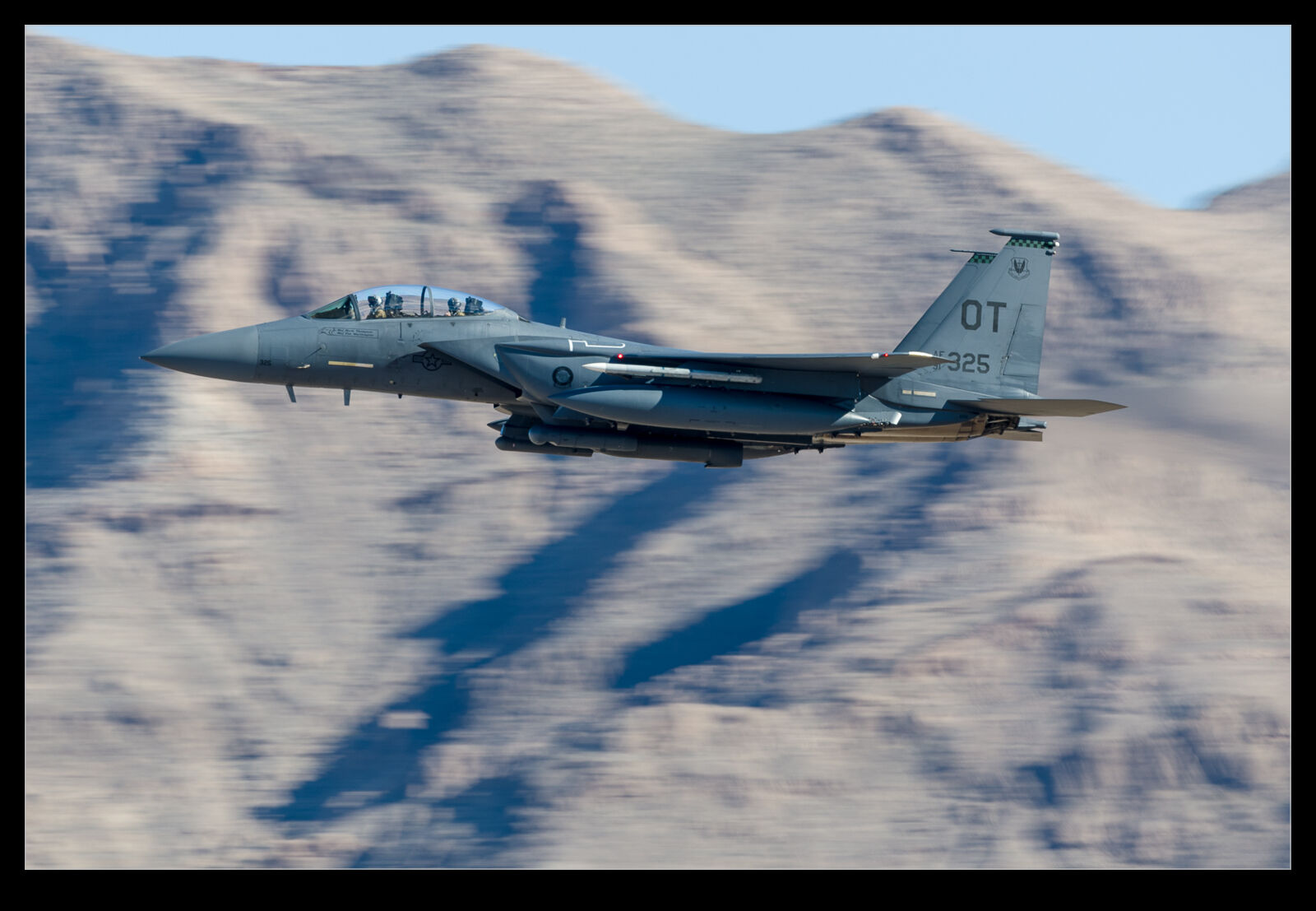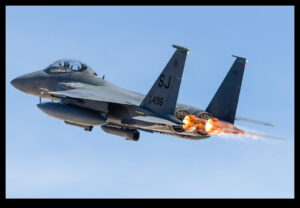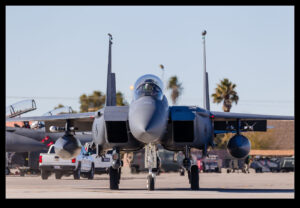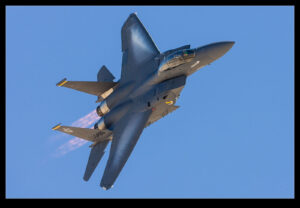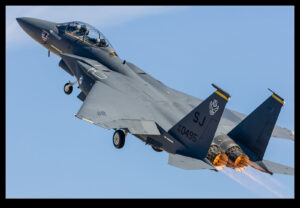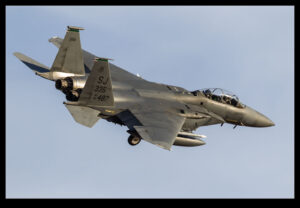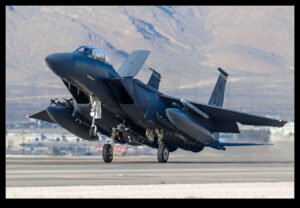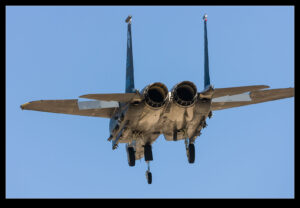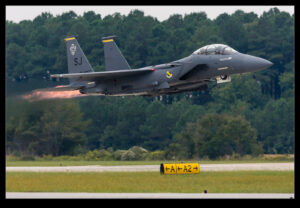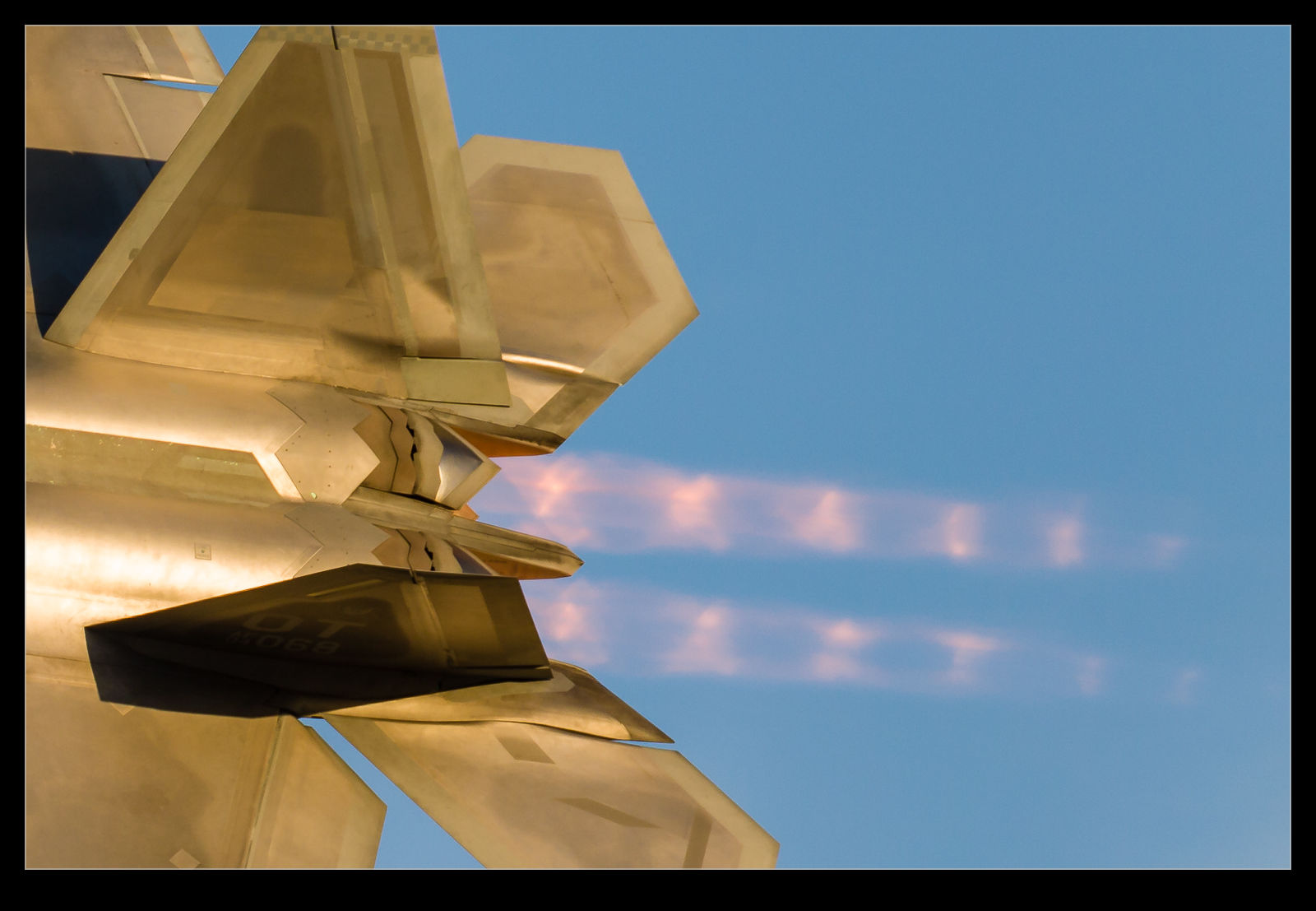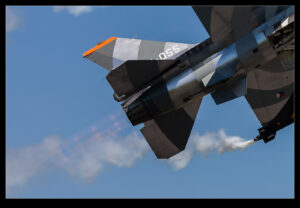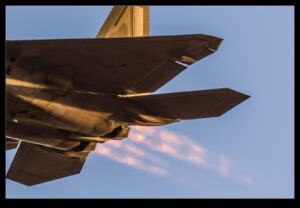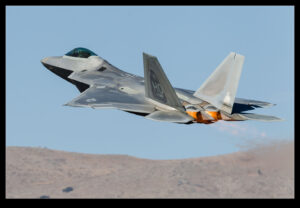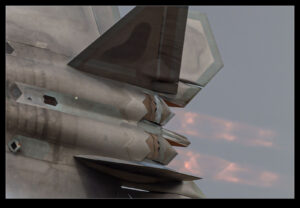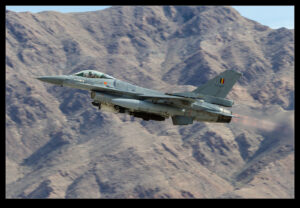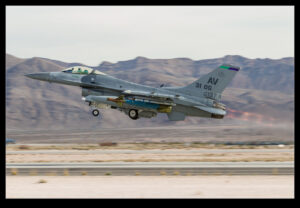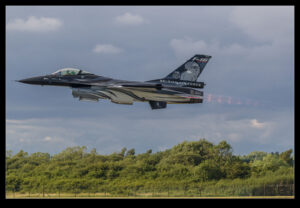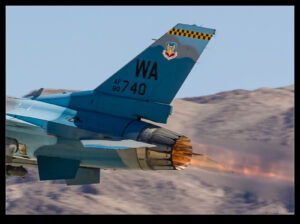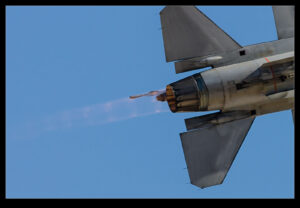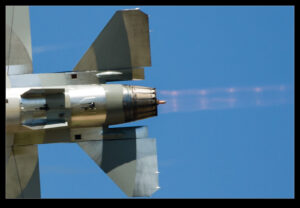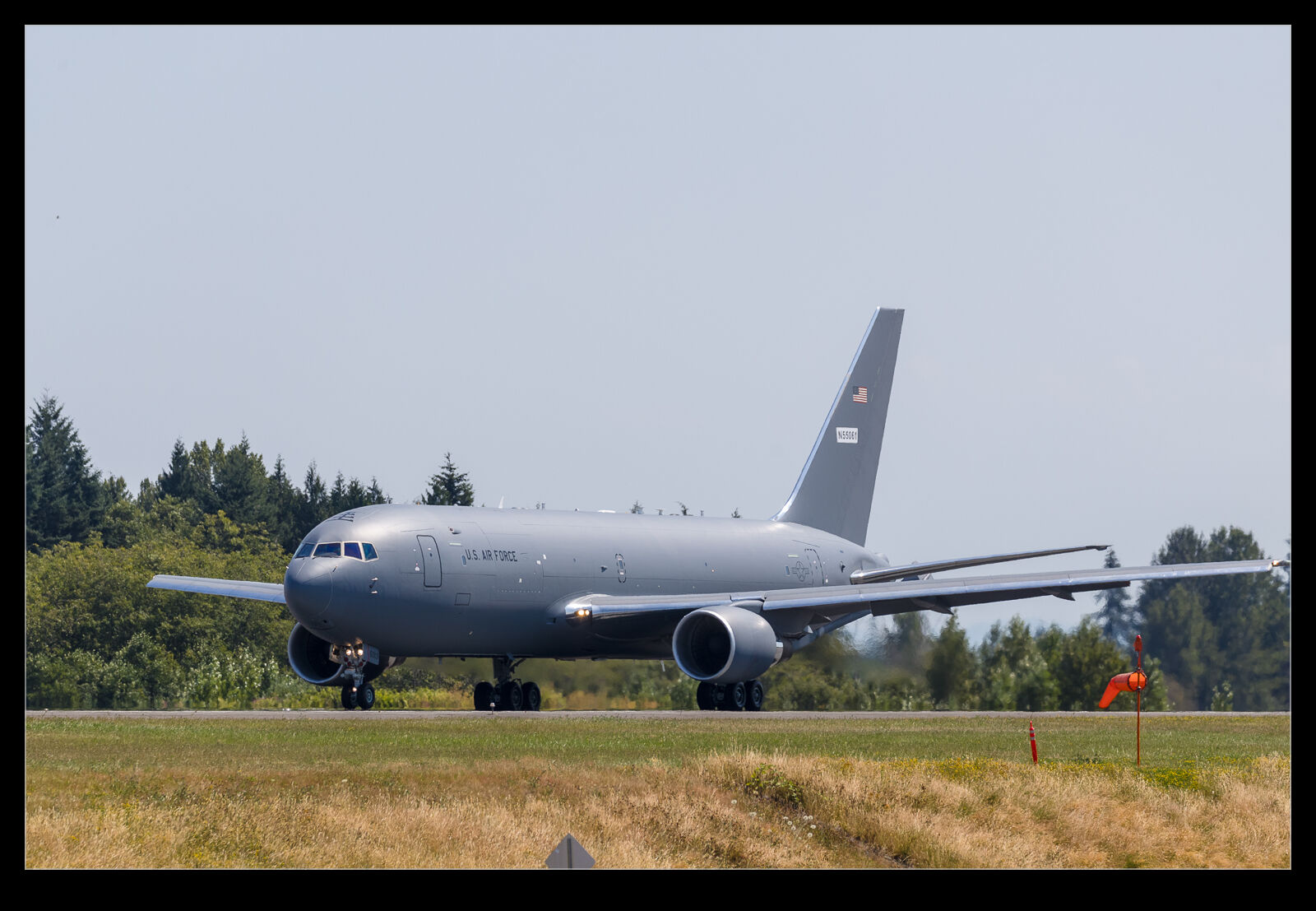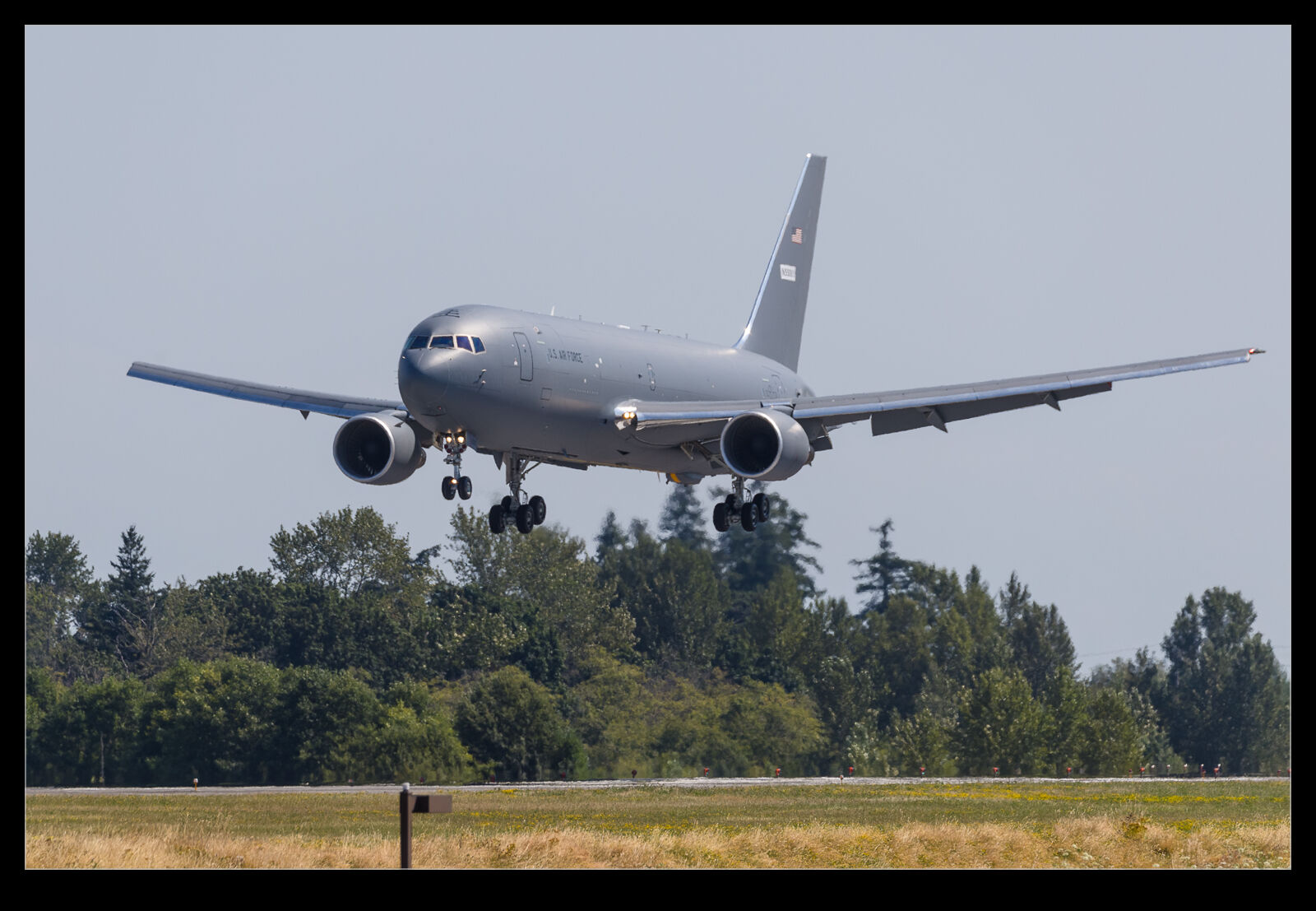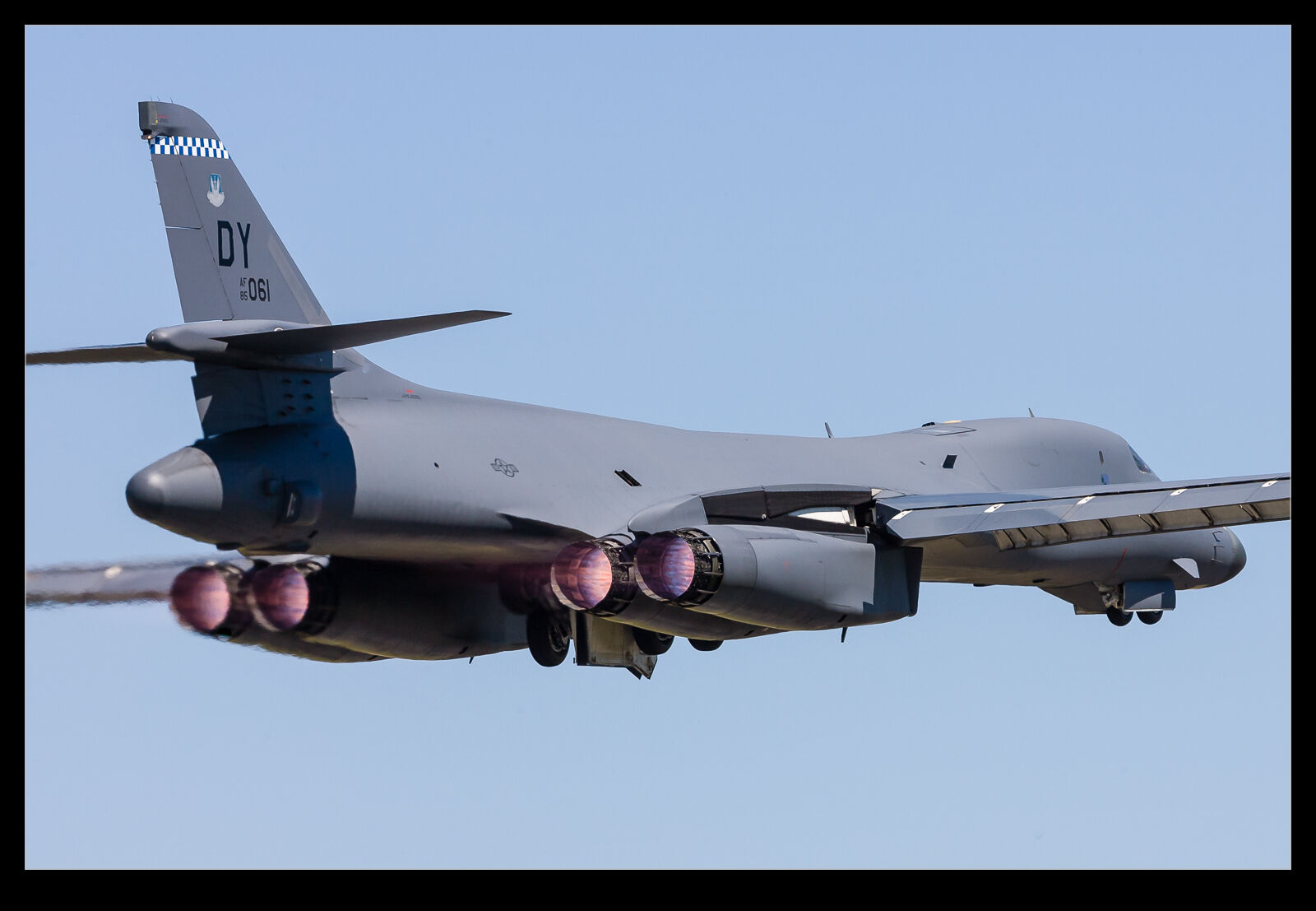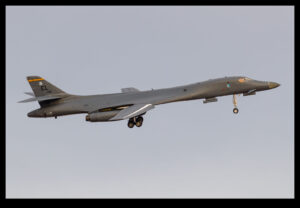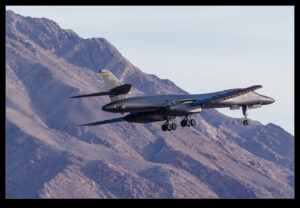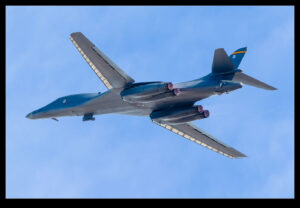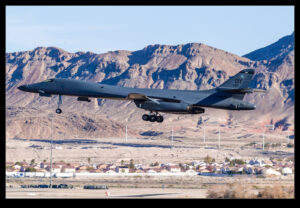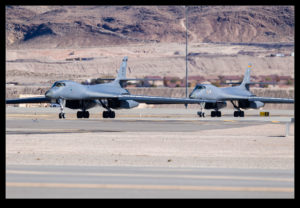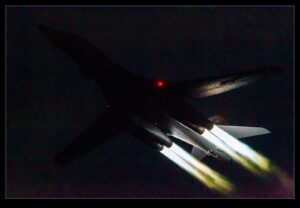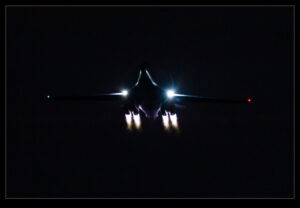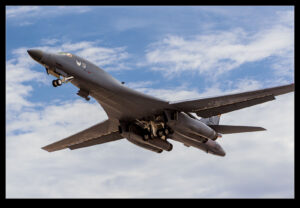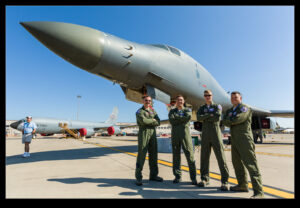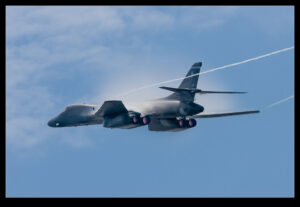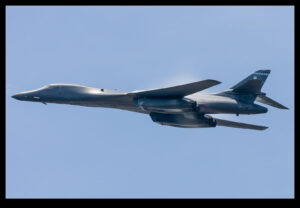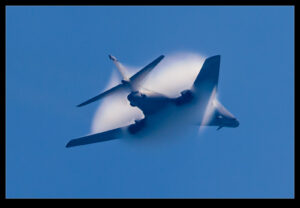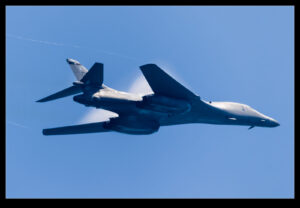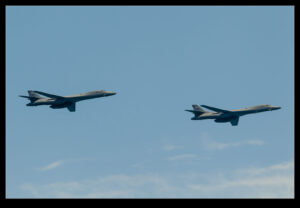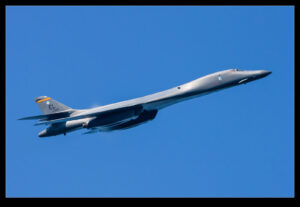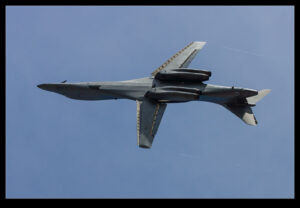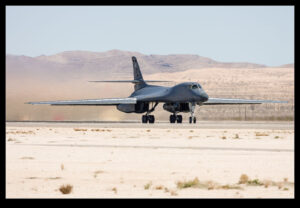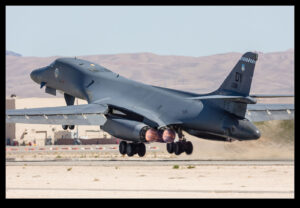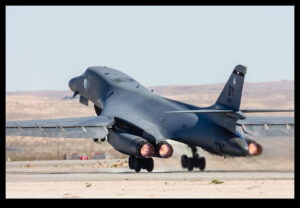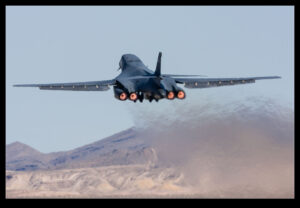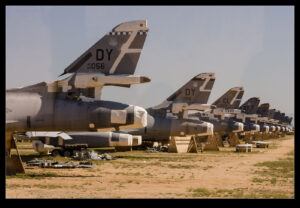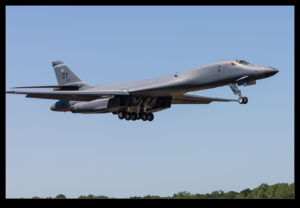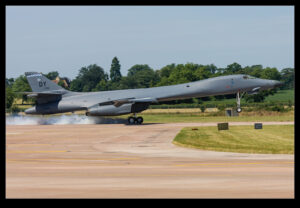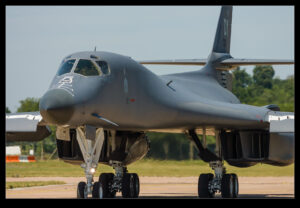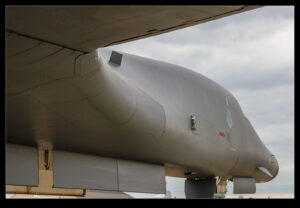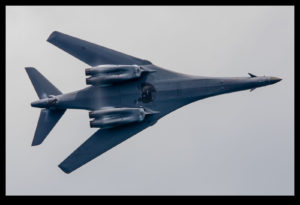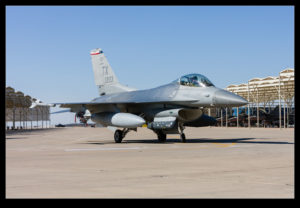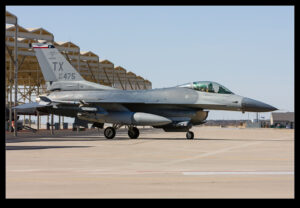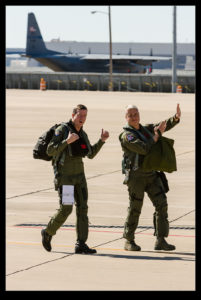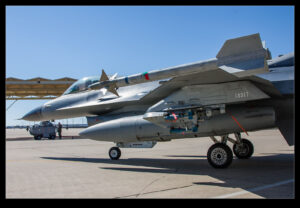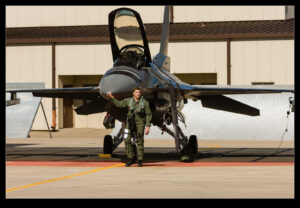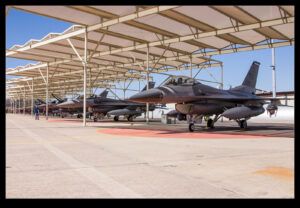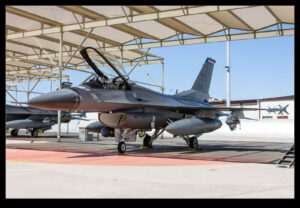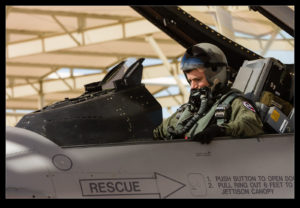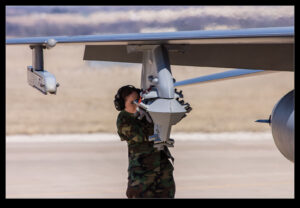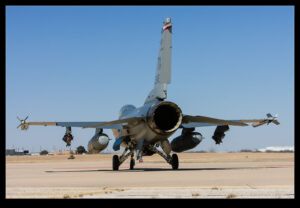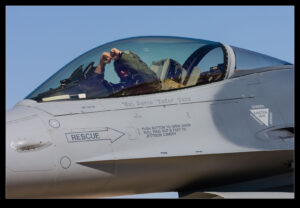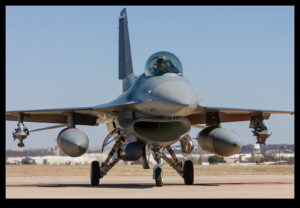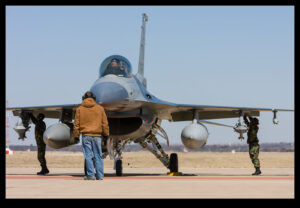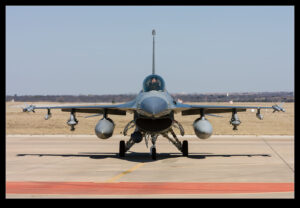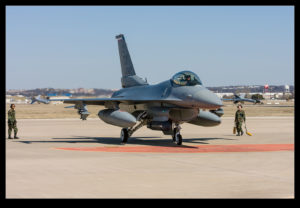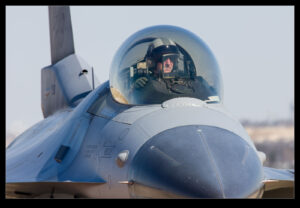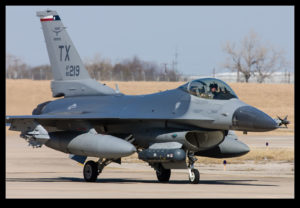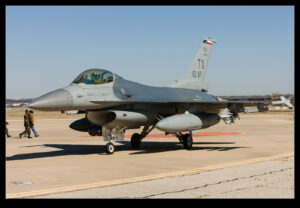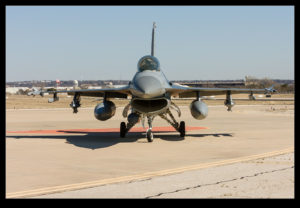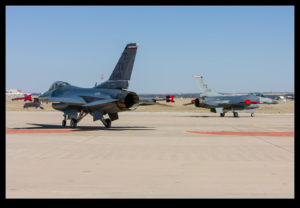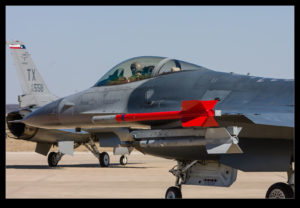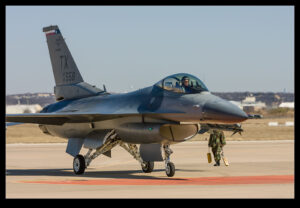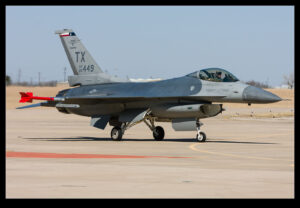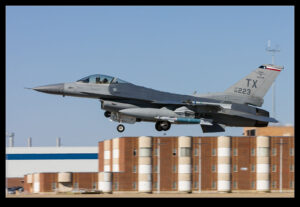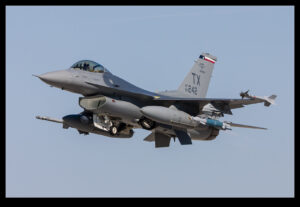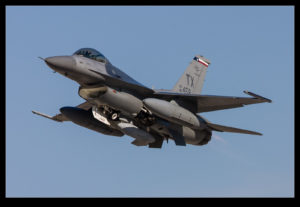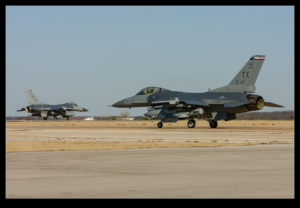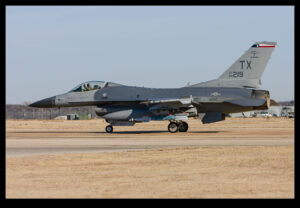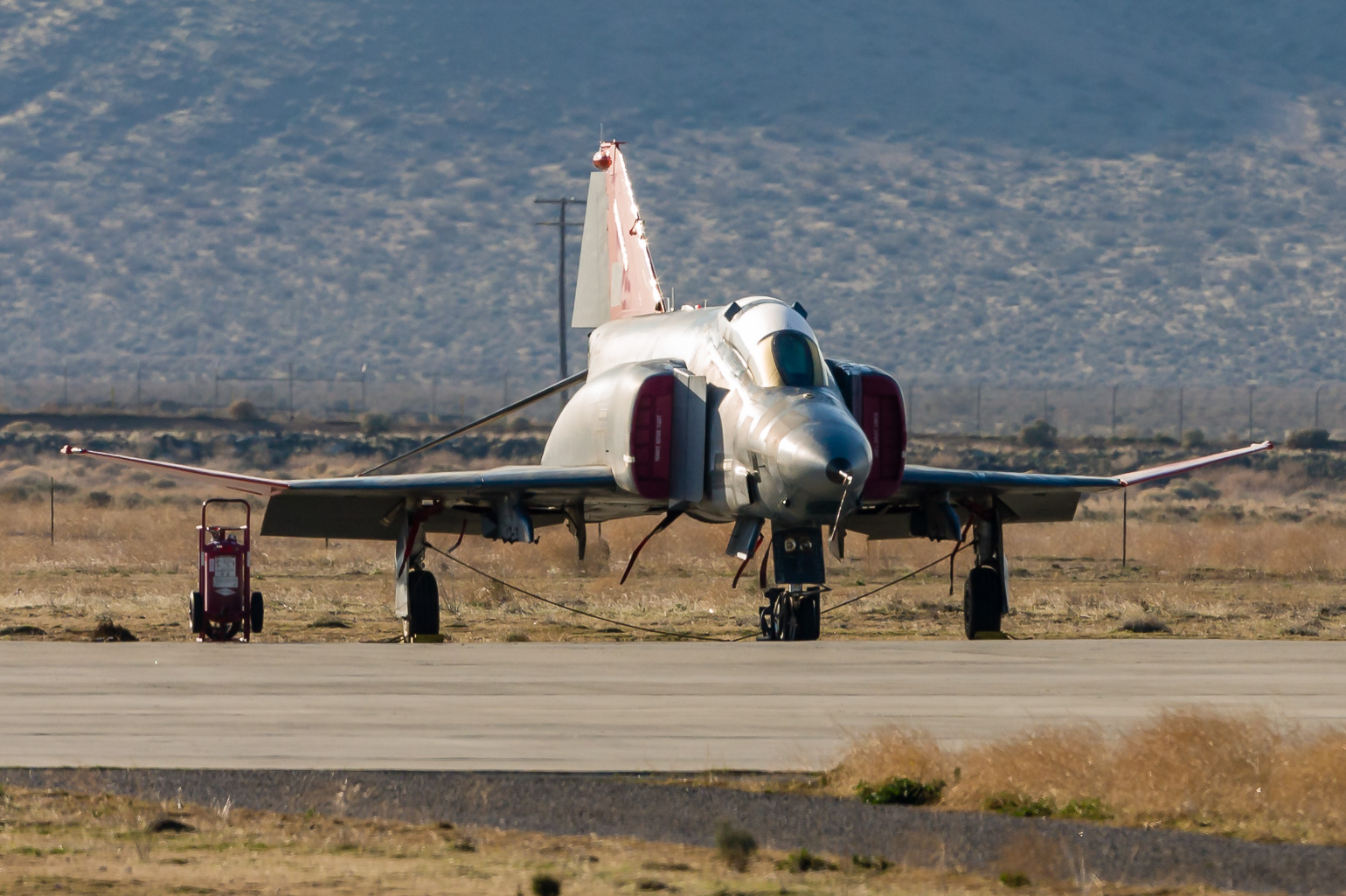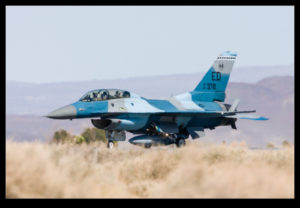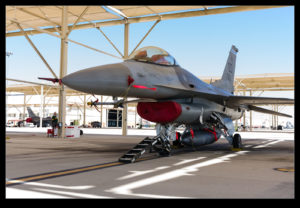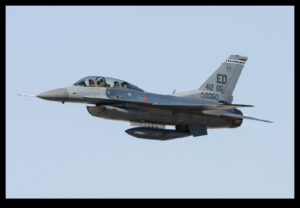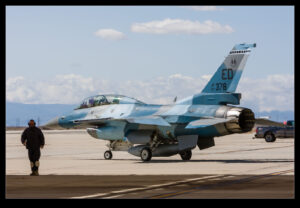 I was working through some shots and came across a sequence a little before a bunch of shots I have used a lot in the past. It was of B-2s on approach to Nellis just before sunset. I had some clear shots of them in the distance including as the gear was traveling. Here is one of those shots. I just liked it and thought I would share it here.
I was working through some shots and came across a sequence a little before a bunch of shots I have used a lot in the past. It was of B-2s on approach to Nellis just before sunset. I had some clear shots of them in the distance including as the gear was traveling. Here is one of those shots. I just liked it and thought I would share it here.
Tag Archives: USAF
Red Flag Night Launches
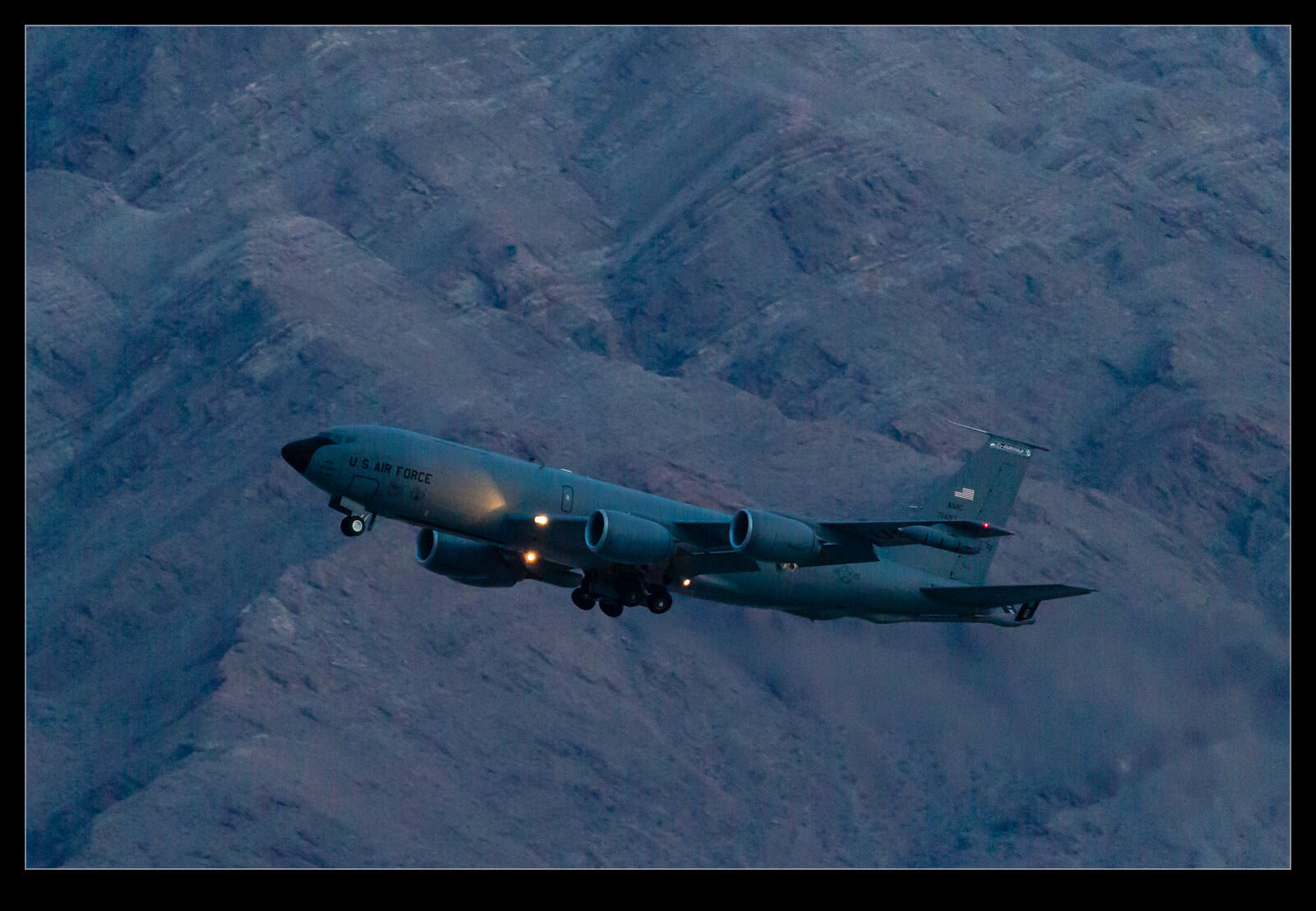 Adobe periodically updates the processing algorithms that are used by Lightroom and Photoshop. Each update provides some improvements in how raw files are processed and it can be good to go back to older shots and to see how the newer process versions handle the images. I find this particularly useful for images shot in low light and with high ISO.
Adobe periodically updates the processing algorithms that are used by Lightroom and Photoshop. Each update provides some improvements in how raw files are processed and it can be good to go back to older shots and to see how the newer process versions handle the images. I find this particularly useful for images shot in low light and with high ISO.
 I have some standard process settings I use but have also experimented with modified settings for use with high ISOs and the higher noise levels that come with them. I got to some night launch shots from an old Red Flag exercise and had a play with the images. The E-3 launch was actually as the light was going down but it still had some illumination so it didn’t need much work.
I have some standard process settings I use but have also experimented with modified settings for use with high ISOs and the higher noise levels that come with them. I got to some night launch shots from an old Red Flag exercise and had a play with the images. The E-3 launch was actually as the light was going down but it still had some illumination so it didn’t need much work.
 The KC-135 and B-1B shots were a different story and were at high ISOs and with very little light. I was able to update the process version and apply some new settings I had worked out since the original processing and it resulted in some pretty reasonable outputs considering how little light there was to work with.
The KC-135 and B-1B shots were a different story and were at high ISOs and with very little light. I was able to update the process version and apply some new settings I had worked out since the original processing and it resulted in some pretty reasonable outputs considering how little light there was to work with.
F-15E Strike Eagle
A recent anniversary of the first flight of the F-15E Strike Eagle was commemorated on a Facebook group and it got me looking through a variety of old shots I have of the jet. Having found a bunch of them that I liked, I figured I might share a few of them on the blog too. Here are a few of my favorites from over the years.
- A USAF F-15E Strike Eagle takes off from Nellis AFB to perform a display at Aviation Nation.
- A USAF F-15E Strike Eagle turns on to final approach at Nellis AFB Las Vegas Nevada after a Red Flag mission.
Shock Diamonds and the F-22
Within the very high speed flows of air in an aircraft’s exhaust, you can set up a series of shock waves and expansion fans as a result of the differences between the pressure of the flow and that of the surrounding air. When afterburner is engaged, the hot gases and the temperature changes these shocks and expansions cause, result in a diamond pattern forming in the exhaust plume. In darker conditions, these diamonds are more conspicuous but they are visible even in normal daylight.
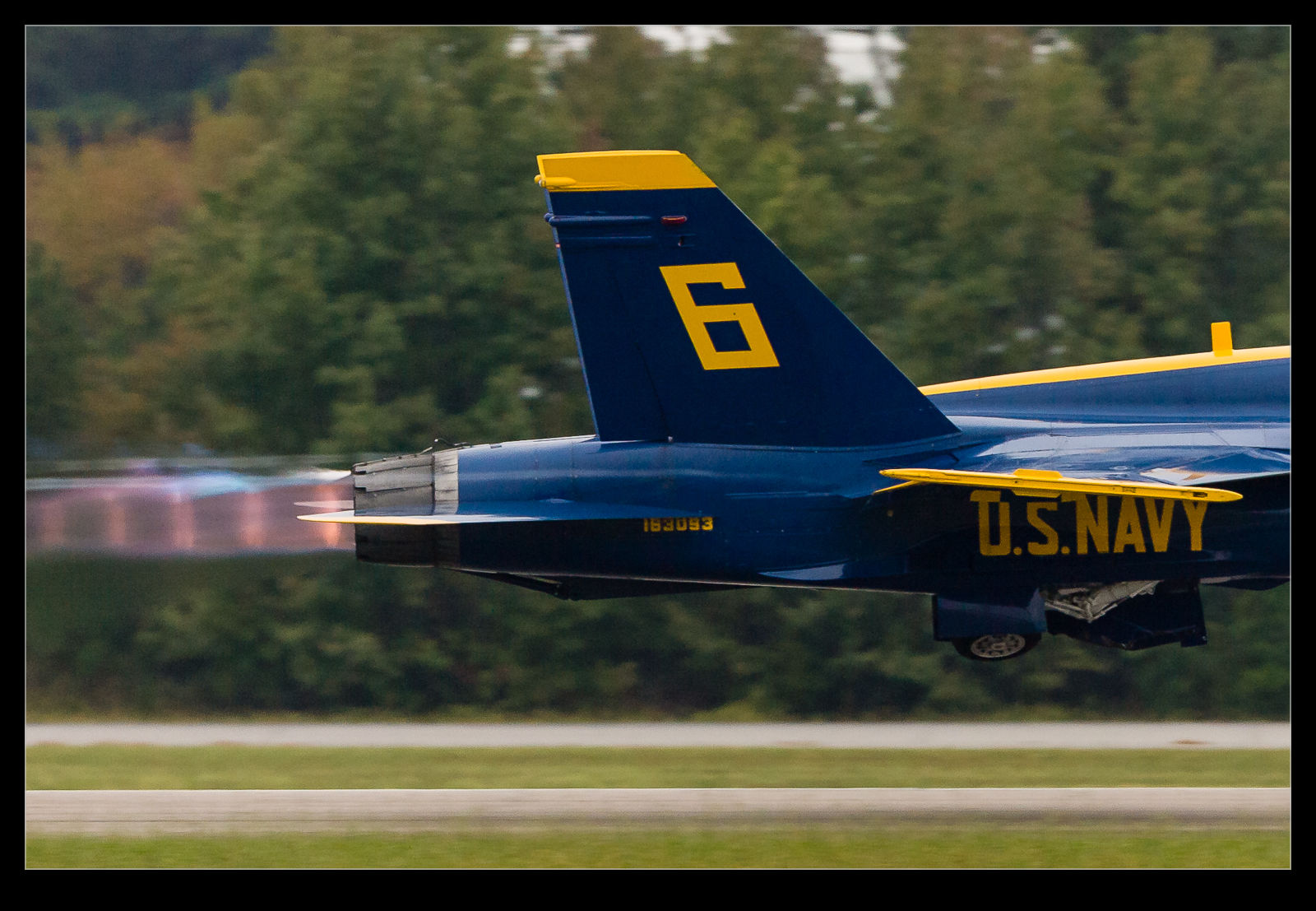 These diamond patterns are a function of the flow being symmetrical since most engines have round exhaust nozzles. This isn’t the case for the F-22, though. It has flattened nozzles with a pointed profile top and bottom. This got me wondering what the effect is on the exhaust plume and whether the traditional diamonds are formed or whether the nozzle shape results in a different pattern of shock and expansions as they reflect within the plume. I decided to dig in to some shots to see what I could find.
These diamond patterns are a function of the flow being symmetrical since most engines have round exhaust nozzles. This isn’t the case for the F-22, though. It has flattened nozzles with a pointed profile top and bottom. This got me wondering what the effect is on the exhaust plume and whether the traditional diamonds are formed or whether the nozzle shape results in a different pattern of shock and expansions as they reflect within the plume. I decided to dig in to some shots to see what I could find.
 I don’t have a lot of F-22 afterburner shots. While I have shot them a lot taking off, they often take off without afterburner. Since they have plenty of power and burner use dramatically increases fuel consumption (and the F-22 is not over-endowed with range as it is), there is no point using burner if it isn’t needed. Air shows are a time when they do give it plenty of burner, so that is the source of the shots.
I don’t have a lot of F-22 afterburner shots. While I have shot them a lot taking off, they often take off without afterburner. Since they have plenty of power and burner use dramatically increases fuel consumption (and the F-22 is not over-endowed with range as it is), there is no point using burner if it isn’t needed. Air shows are a time when they do give it plenty of burner, so that is the source of the shots.
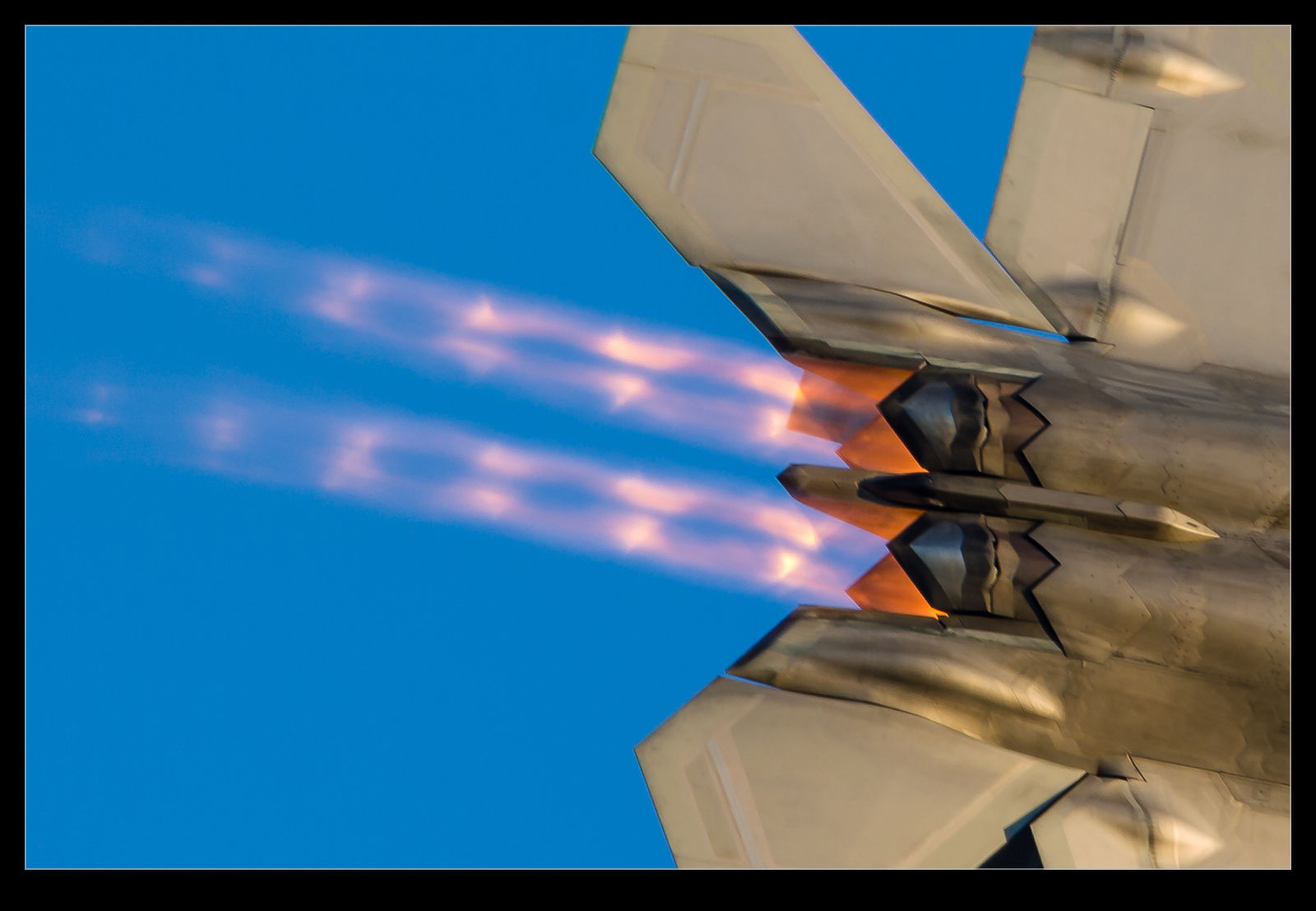 The result of this is that there is definitely something unusual about the shock patterns. I include some shots of F-16 and F/A-18 afterburner plumes and the normal shock patterns that create the hotspots known as the diamonds are very obvious and simple in shape. For the F-22, things are very different with the patterns of hot zones being something more in line with the shape of the nozzle. The way in which the patterns repeat is more complex than for an axisymmetric nozzle. There is nothing much to conclude in these observations. It is just something that appeals to an old aero guy like me.
The result of this is that there is definitely something unusual about the shock patterns. I include some shots of F-16 and F/A-18 afterburner plumes and the normal shock patterns that create the hotspots known as the diamonds are very obvious and simple in shape. For the F-22, things are very different with the patterns of hot zones being something more in line with the shape of the nozzle. The way in which the patterns repeat is more complex than for an axisymmetric nozzle. There is nothing much to conclude in these observations. It is just something that appeals to an old aero guy like me.
- A heavily loaded USAF Lockheed Martin F-16CJ Fighting Falcon gets airborne from Nellis AFB NV.
Pegasus Heading Out and Back
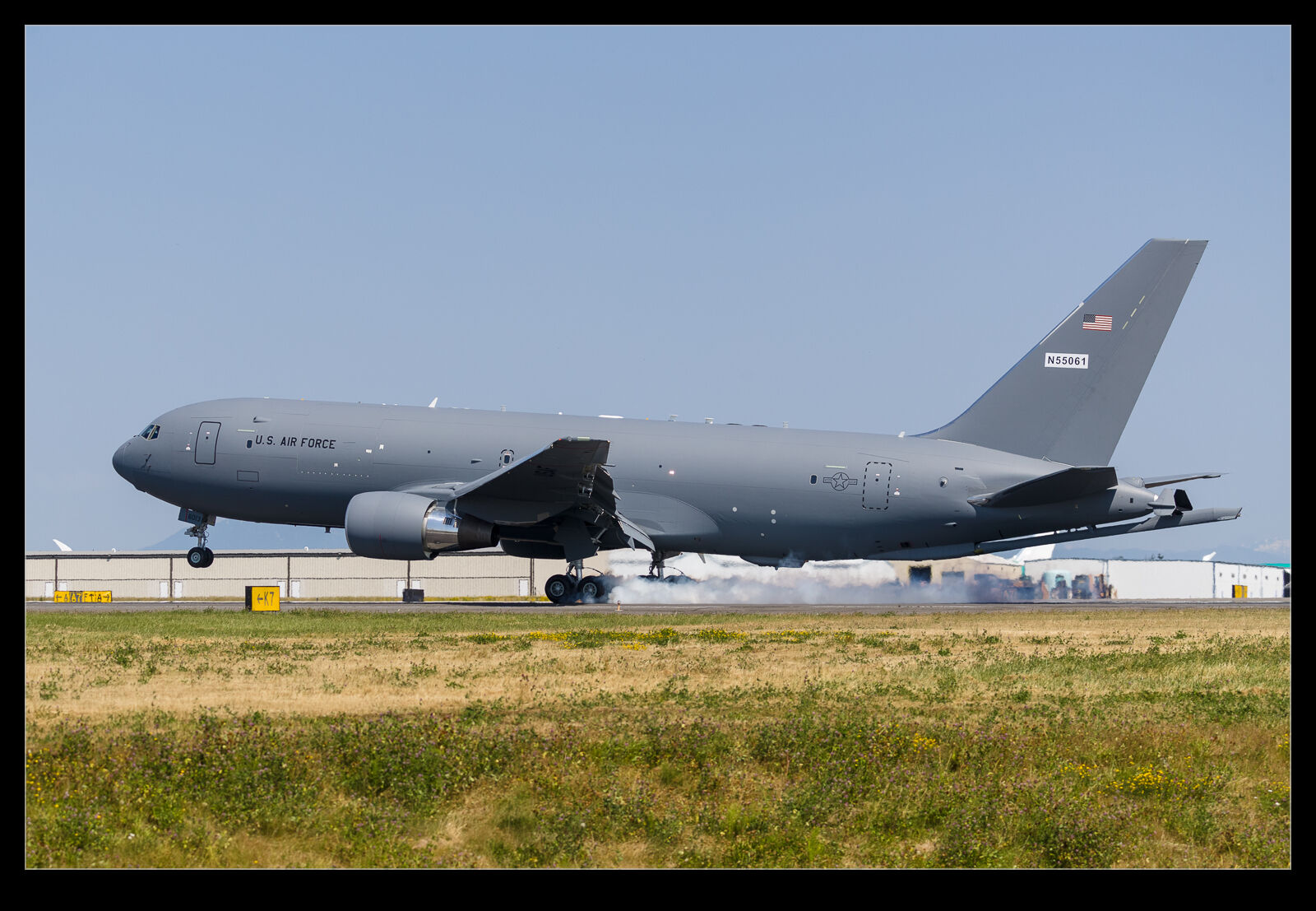 Boeing seems to have addressed a lot of the problems with the KC-46 Pegasus program (but not all of them yet) and so the Air Force is taking delivery of jets at a regular rate. Since plenty have been built, there are enough to deliver. I was at Paine Field a while back when one of the jets was heading out on a test flight. I ended up being there for both the departure and the arrival since the flight was not that long. The good summer light that Seattle gets but we don’t like people to know about meant I got some reasonable shots of it.
Boeing seems to have addressed a lot of the problems with the KC-46 Pegasus program (but not all of them yet) and so the Air Force is taking delivery of jets at a regular rate. Since plenty have been built, there are enough to deliver. I was at Paine Field a while back when one of the jets was heading out on a test flight. I ended up being there for both the departure and the arrival since the flight was not that long. The good summer light that Seattle gets but we don’t like people to know about meant I got some reasonable shots of it.
Lucky C-17 Overflight
 This goes back quite a while to a day when I was at Paine Field for some 777X activities. After all that I had been there for was done, I was getting ready to pack up and go when I saw something off to the east approaching the field. It was large but seemed rather slow. It turned out to be a C-17. It made a pass straight across the field and I was hoping that they would break into the pattern but I was to be disappointed. They turned to the south and headed off towards McChord. Still, it was a nice addition to a sunny day of aviation photography.
This goes back quite a while to a day when I was at Paine Field for some 777X activities. After all that I had been there for was done, I was getting ready to pack up and go when I saw something off to the east approaching the field. It was large but seemed rather slow. It turned out to be a C-17. It made a pass straight across the field and I was hoping that they would break into the pattern but I was to be disappointed. They turned to the south and headed off towards McChord. Still, it was a nice addition to a sunny day of aviation photography.
Bones Retrospective
The B-1B Lancer (or Bone to almost everyone who cares) is an impressive piece of hardware. It might have some performance limitations resulting from the redesign it underwent from the original canceled B-1A to the B-1B – changes that might not look that obvious but run quite deep – but it is still a very capable jet. The blended airframe shaping really appeals to an aero guy like me while the swing wing is now a concept that is disappearing as other types retire so it is becoming the last of the line. Add to that four afterburning engines and you get something that makes an impression.
 It used to be a regular performer at air shows but these days you don’t see them as much. However, it can still turn heads when it makes fast passes and plugs in the burners. A bit of vapor can also be pulled as they get the speed and load on. Seeing them launch from close to the runway is always worthwhile. They are such an imposing jet. Sadly, their limitations and the cost of supporting them will probably mean they get retired long before the B-52s that they were once considered to replace. Here are some shots of my Bone encounters.
It used to be a regular performer at air shows but these days you don’t see them as much. However, it can still turn heads when it makes fast passes and plugs in the burners. A bit of vapor can also be pulled as they get the speed and load on. Seeing them launch from close to the runway is always worthwhile. They are such an imposing jet. Sadly, their limitations and the cost of supporting them will probably mean they get retired long before the B-52s that they were once considered to replace. Here are some shots of my Bone encounters.
- A USAF Boeing B-1B Lancer turns on to final approach at Nellis AFB NV.
- A USAF Boeing B-1B Lancer on final approach to Nellis AFB NV.
- A Boeing B-1B Lancer of the USAF touches down at RAF Fairford, UK.
Fort Worth F-16s
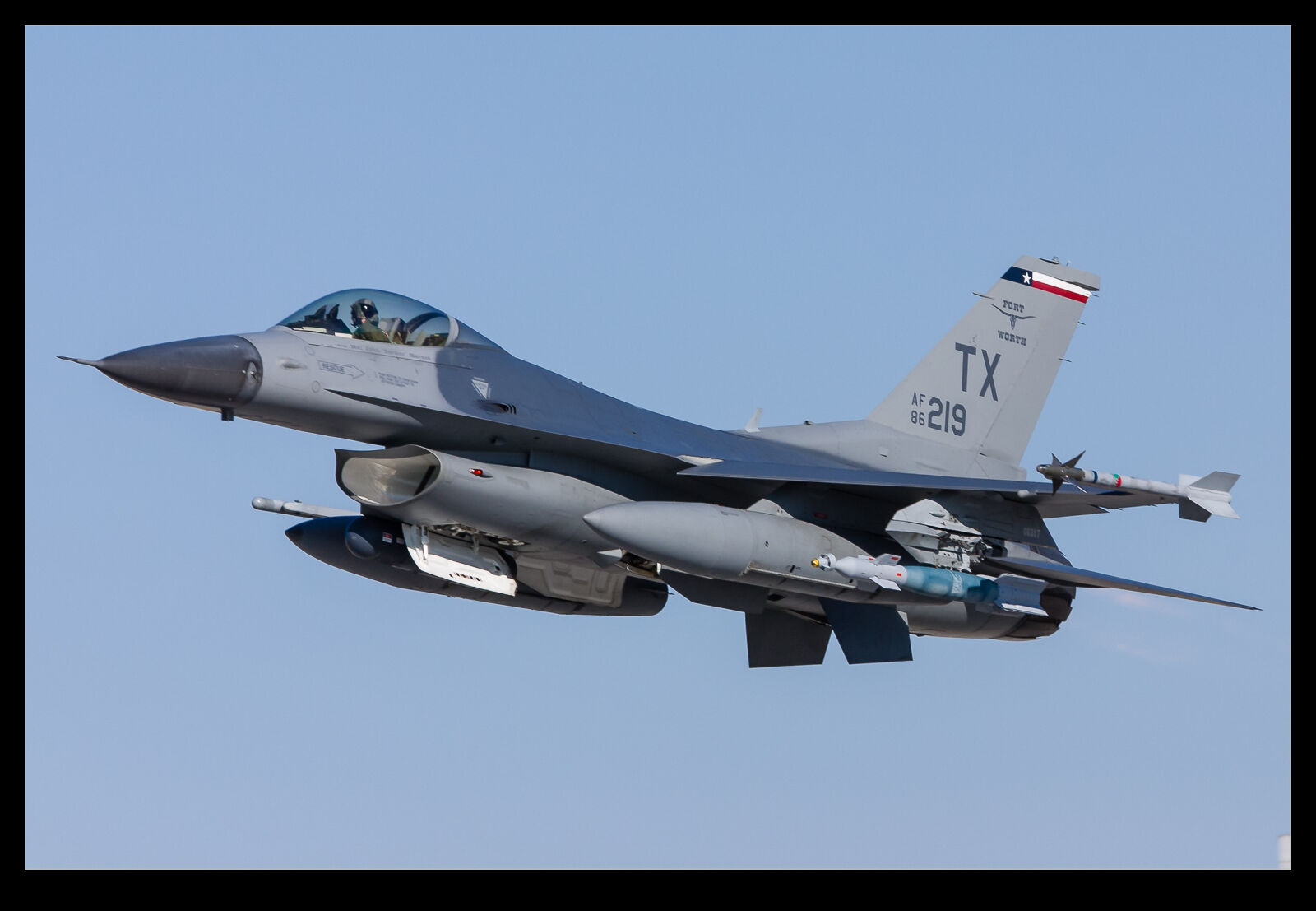 Ahead of an ISAP symposium many years ago, my friend Richard had arranged a visit to JRB Carswell at Fort Worth. As well as being the home of the Lockheed Martin assembly plant, it also hosts the 301st FW of the USAF Reserve with their F-16s. They were great hosts and we got to spend a bunch of time around the base. On their ramp space, we had a lot of freedom to shoot them prepping for missions and heading out.
Ahead of an ISAP symposium many years ago, my friend Richard had arranged a visit to JRB Carswell at Fort Worth. As well as being the home of the Lockheed Martin assembly plant, it also hosts the 301st FW of the USAF Reserve with their F-16s. They were great hosts and we got to spend a bunch of time around the base. On their ramp space, we had a lot of freedom to shoot them prepping for missions and heading out.
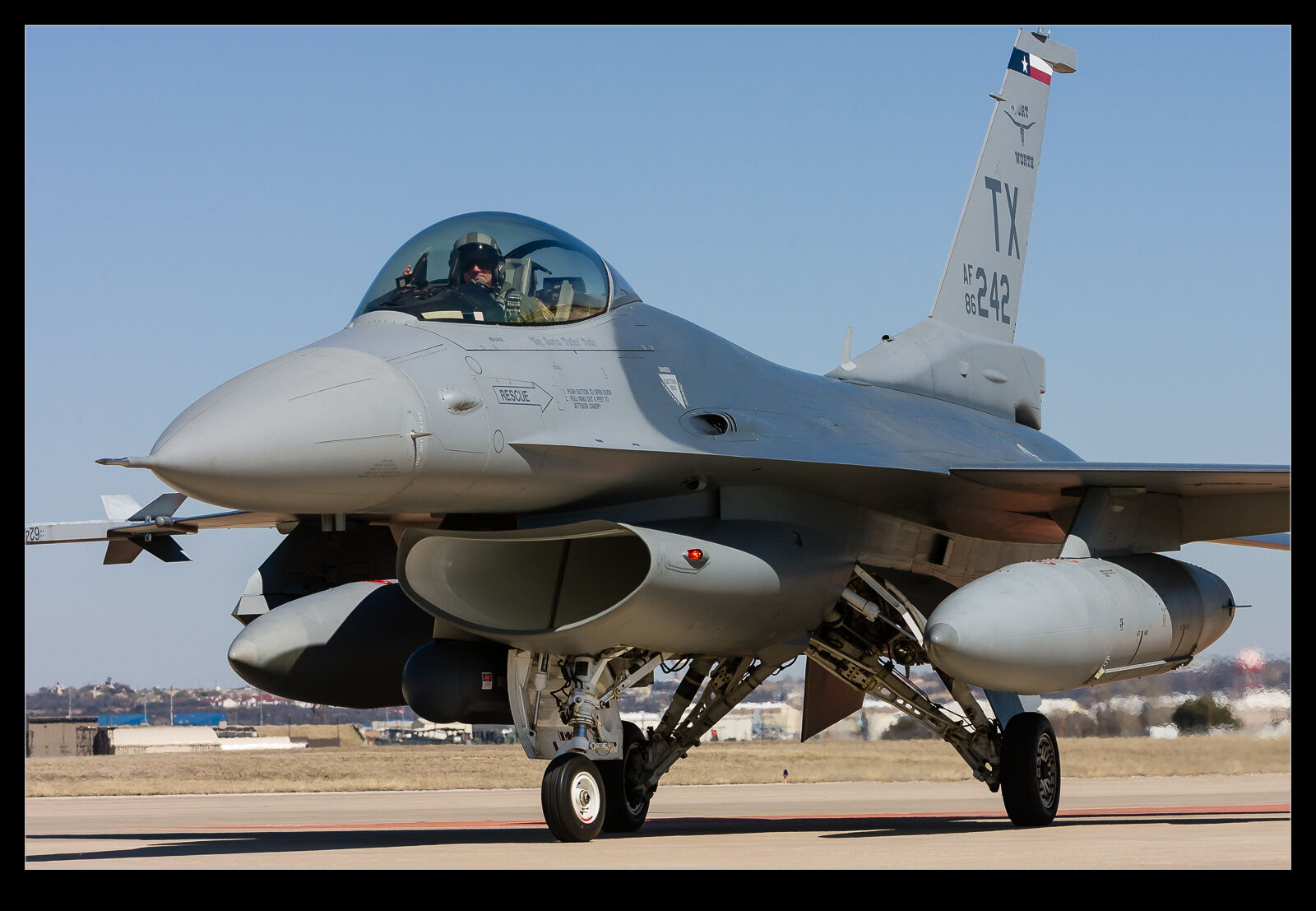 We also got to go to the EOR and see them come in after their missions and have the jets safed prior to taxiing back to the ramp. Being close to the jets while they are doing real work is such a different experience to seeing them at an air show when things are all a bit more contrived. This was a new experience for me at the time and so I was following the example of a few of the other guys when looking to see what sort of things to get shots of. It was a great learning experience and a bunch of fun too!
We also got to go to the EOR and see them come in after their missions and have the jets safed prior to taxiing back to the ramp. Being close to the jets while they are doing real work is such a different experience to seeing them at an air show when things are all a bit more contrived. This was a new experience for me at the time and so I was following the example of a few of the other guys when looking to see what sort of things to get shots of. It was a great learning experience and a bunch of fun too!
Drone F-4s at Mojave
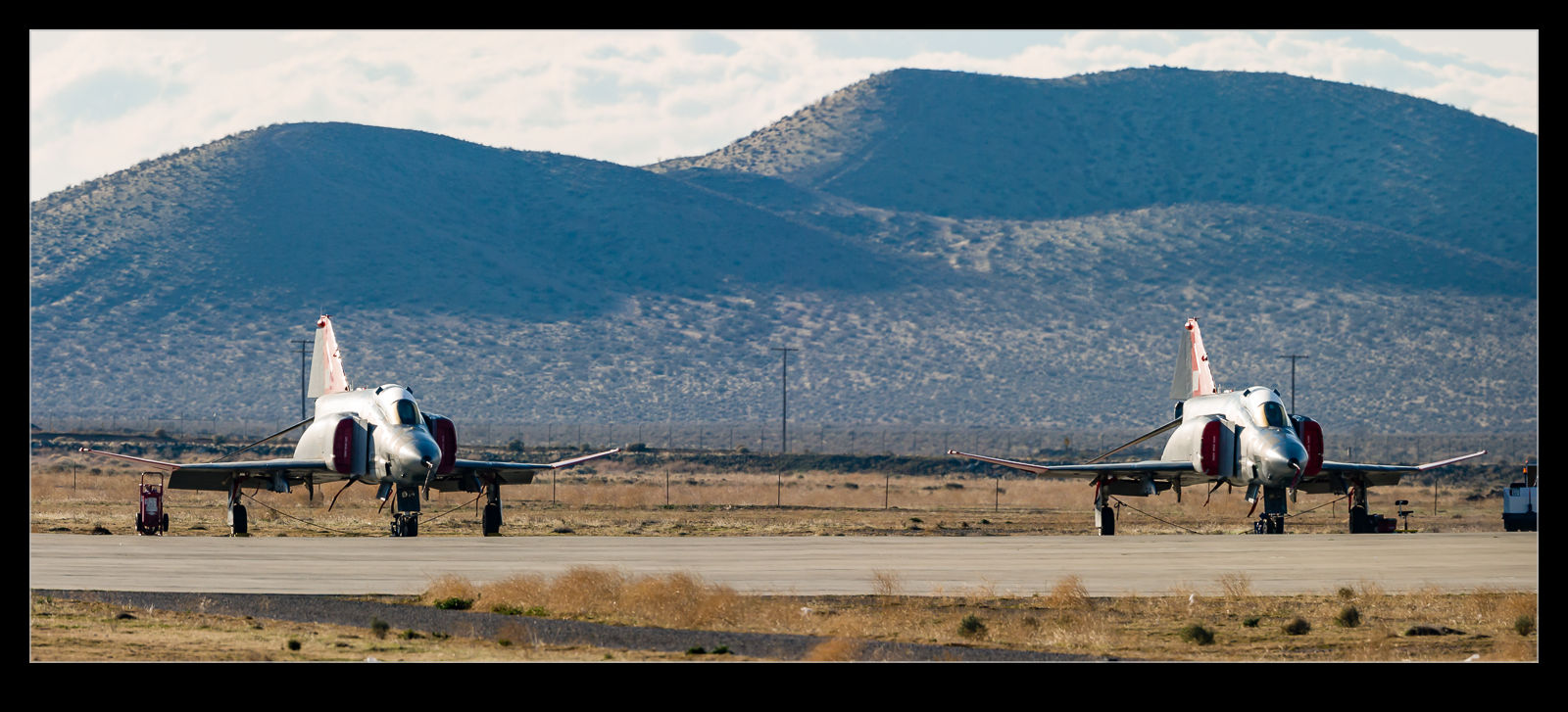 Before the F-16s became the drone target conversion of choice for the USAF, the F-4 was the jet. The contract for conversion was run by Tracor which ultimately ended up being part of BAE Systems at the time I saw these jets. They did the conversion program at Mojave Airport in California. We were a bit of a distance from the ramp where they were parked but it was early in the day and the heat haze was not yet a problem so a long shot was feasible. Looking at these, I think they were both RF-4C jets that had either been converted or were about to be.
Before the F-16s became the drone target conversion of choice for the USAF, the F-4 was the jet. The contract for conversion was run by Tracor which ultimately ended up being part of BAE Systems at the time I saw these jets. They did the conversion program at Mojave Airport in California. We were a bit of a distance from the ramp where they were parked but it was early in the day and the heat haze was not yet a problem so a long shot was feasible. Looking at these, I think they were both RF-4C jets that had either been converted or were about to be.
Edwards F-16s
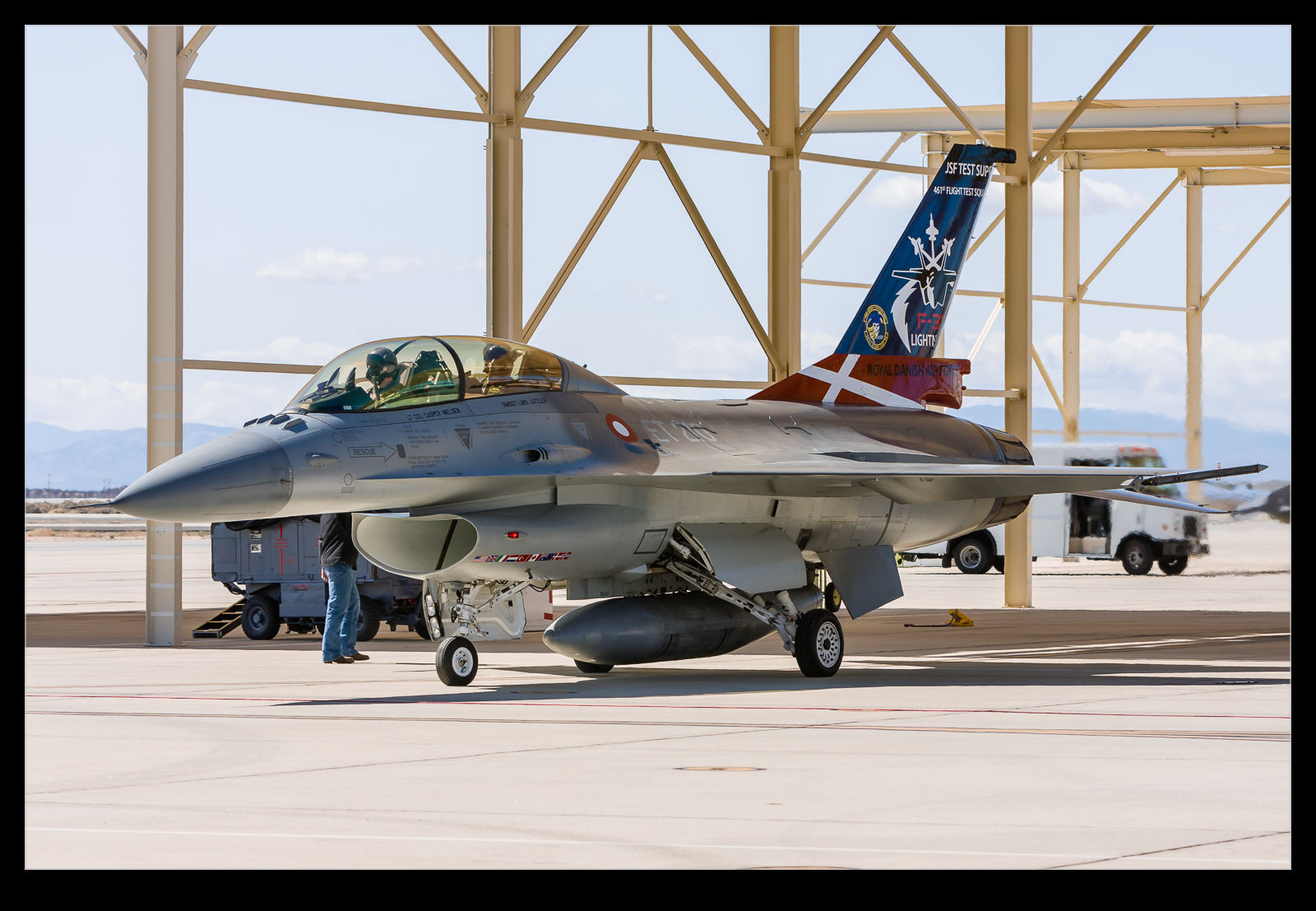 Another day, another retro post. I am pleasantly surprised by what I find as I go through old shots since I am not able to get any new shots while we are all self-isolating. In this case it was a visit to Edwards AFB that was a pre-symposium trip ahead of an ISAP meeting. I think Richard was the one that organized it all. Anyway, the Edwards test fleet includes a bunch of F-16s. Some are from the test pilot school and some are test program assets or chase planes. There was also a Danish jet that was supporting the F-35 program.
Another day, another retro post. I am pleasantly surprised by what I find as I go through old shots since I am not able to get any new shots while we are all self-isolating. In this case it was a visit to Edwards AFB that was a pre-symposium trip ahead of an ISAP meeting. I think Richard was the one that organized it all. Anyway, the Edwards test fleet includes a bunch of F-16s. Some are from the test pilot school and some are test program assets or chase planes. There was also a Danish jet that was supporting the F-35 program.
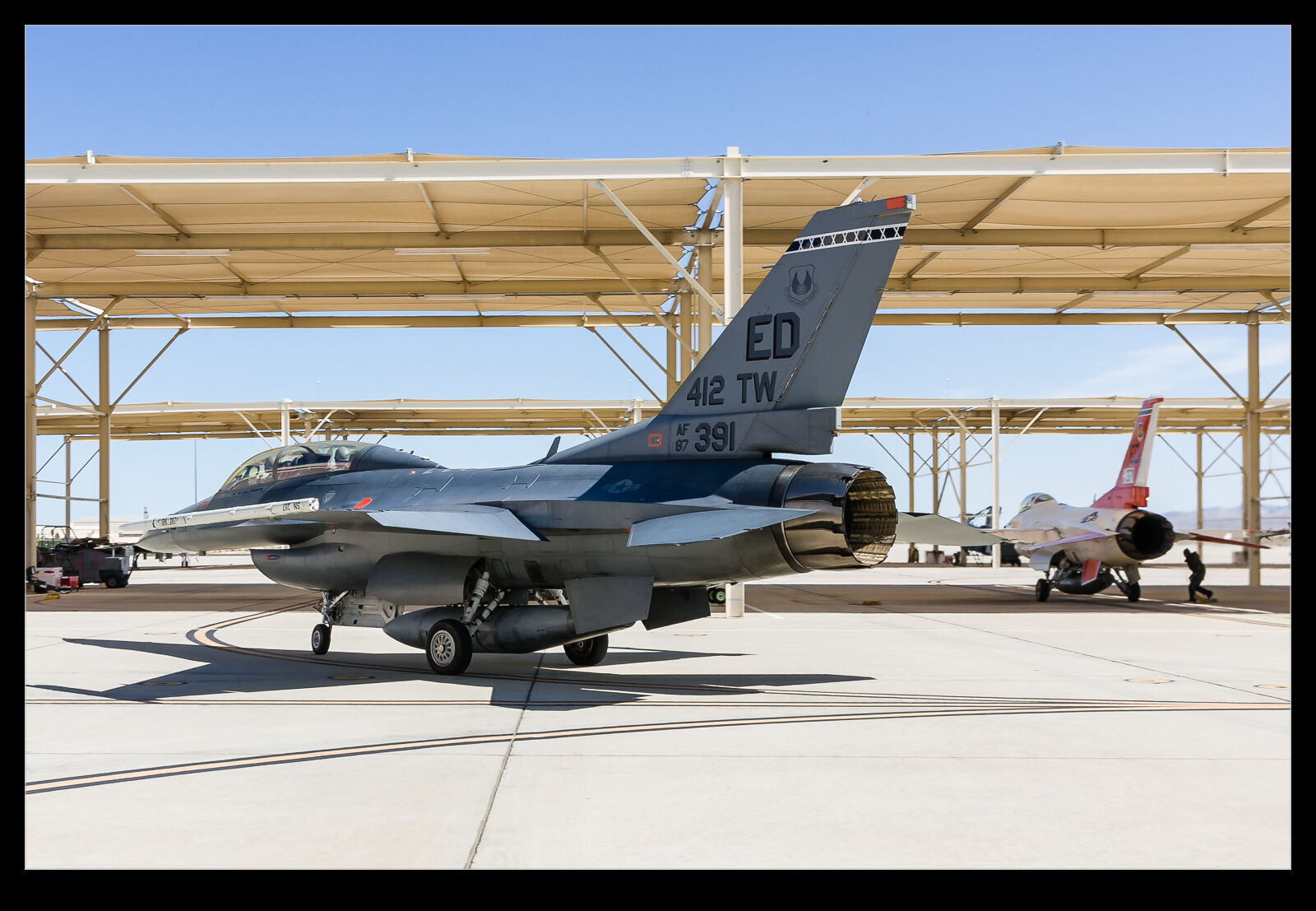 We got to hang out on the ramp as see the jets under the shelters as well as get up close and personal as they were heading out for a mission and recovering. We later went out to shoot near the runway which was fun but not ideal from a shooting perspective because of heat haze. Who would have thought the Mojave Desert would have heat haze! Still better than a day at work of course.
We got to hang out on the ramp as see the jets under the shelters as well as get up close and personal as they were heading out for a mission and recovering. We later went out to shoot near the runway which was fun but not ideal from a shooting perspective because of heat haze. Who would have thought the Mojave Desert would have heat haze! Still better than a day at work of course.
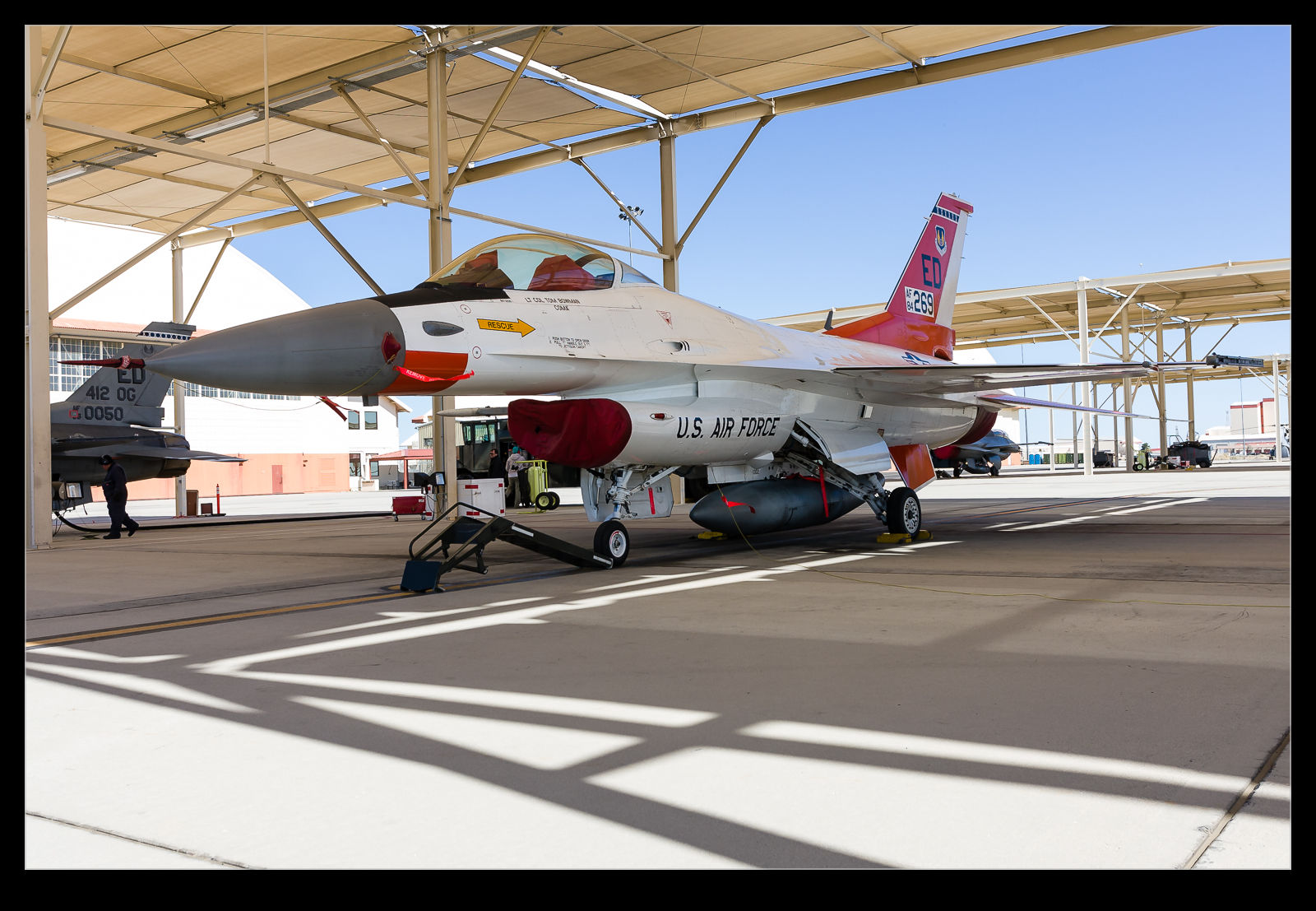 Here are a bunch of shots from that day. I haven’t been through most of these for ages so it is interesting to see what upgrading them to the latest editing algorithms of Lightroom can do for the processing results. I have yet to find one that doesn’t look better with the new processes applied.
Here are a bunch of shots from that day. I haven’t been through most of these for ages so it is interesting to see what upgrading them to the latest editing algorithms of Lightroom can do for the processing results. I have yet to find one that doesn’t look better with the new processes applied.
